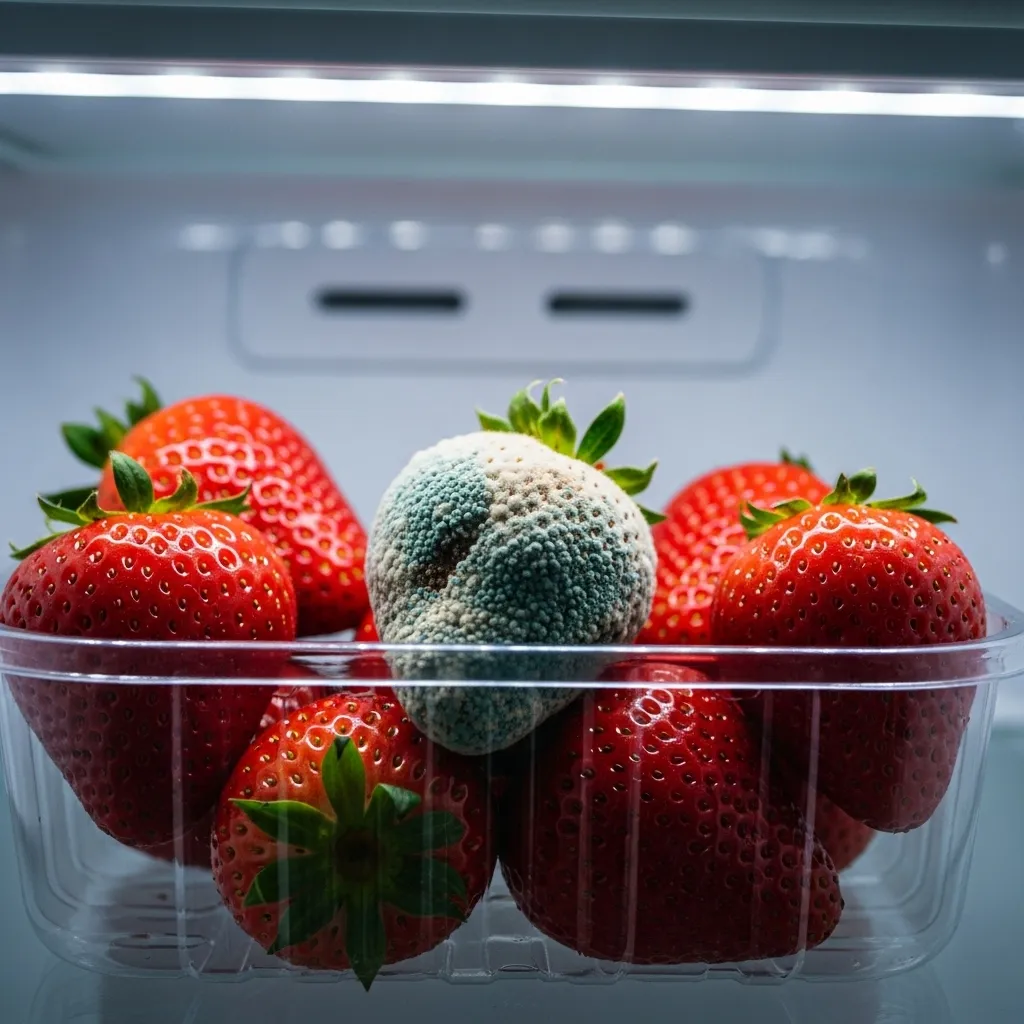
3. Anything with Visible Mold
This may seem obvious, but it’s worth discussing in detail because of common misconceptions. Seeing a spot of mold on a block of cheese or a piece of bread might tempt you to simply cut off the fuzzy part and use the rest. Unfortunately, this is not always a safe practice.
Mold is a type of fungus that has a root-like structure, called mycelium, which can spread deep into food, far beyond what is visible on the surface. Some molds produce mycotoxins, which are poisonous substances that can cause allergic reactions or severe illness. While some molds are harmless (like those used to make blue cheese), you can’t tell the dangerous ones from the safe ones just by looking at them.
Here’s how to handle moldy foods:
Soft Foods: For soft foods with high moisture content, mold should be a red flag to discard the entire item. This includes things like bread, lunch meat, bacon, yogurt, sour cream, jams, jellies, and soft fruits and vegetables like tomatoes, berries, and cucumbers. The mold’s roots can easily penetrate these foods.
Hard Cheeses: With hard cheeses like cheddar, Parmesan, or Swiss, it is generally safe to cut off the moldy spot. The dense texture makes it difficult for the mold to spread deep into the cheese. Be sure to cut off at least one inch around and below the mold spot. Keep the knife out of the mold itself to prevent cross-contaminating the rest of the cheese.
Hard Salami and Dry-Cured Country Hams: Surface mold is a normal part of the curing process for these products. It is generally safe to scrub the mold off the surface before consuming.
When you find a moldy item, don’t sniff it. Inhaling mold spores can trigger respiratory problems, especially for those with allergies or asthma. Wrap the item in a plastic bag and dispose of it in a covered trash can, keeping it away from children and pets. After handling the moldy food, clean the area in the refrigerator where it was stored. A simple solution of one tablespoon of baking soda mixed in one quart of water can work well. Wipe the area and dry it thoroughly.

















